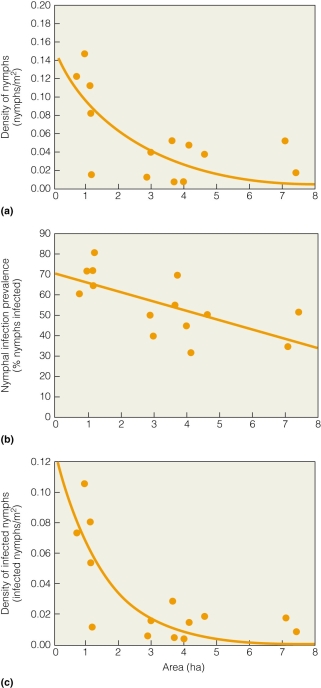Multiple Choice
 Which of the following factors is most strongly reduced with increased forest size?
Which of the following factors is most strongly reduced with increased forest size?
A) density of nymphs
B) percent nymphs infected
C) density of infected nymphs
D) density of deer infected
Correct Answer:

Verified
Correct Answer:
Verified
Related Questions
Q7: The outcome of an infection is called
Q8: Zooxanthellae are photosynthetic algae living within the
Q9: While foraging on grass,white-tailed deer occasionally ingest
Q10: Holoparasites are plants that lack chlorophyll and
Q11: Plants that rely on ants to disperse
Q13: Which of the following uses a mosquito
Q14: Some parasitic plants are spread from one
Q15: The production of antibodies that results from
Q16: The intimate and protracted association between two
Q17: The meningeal worm matures into an adult